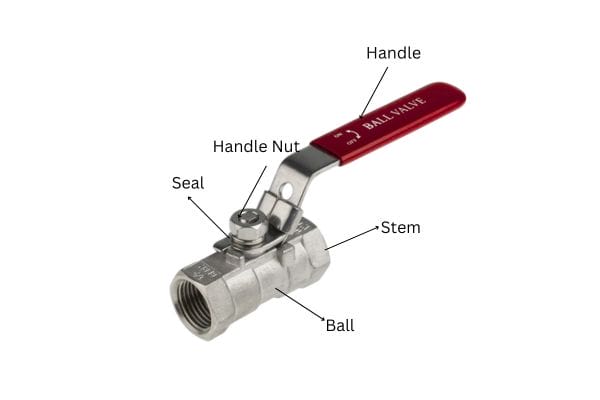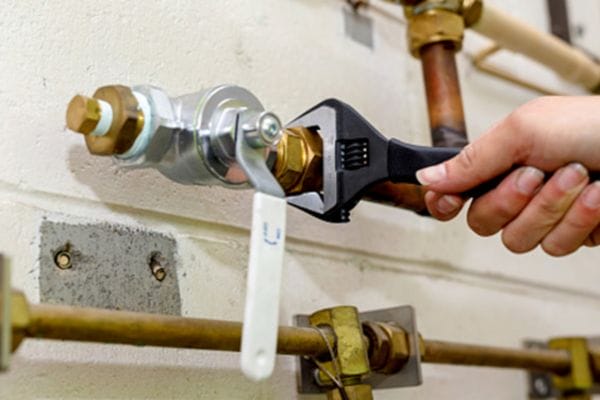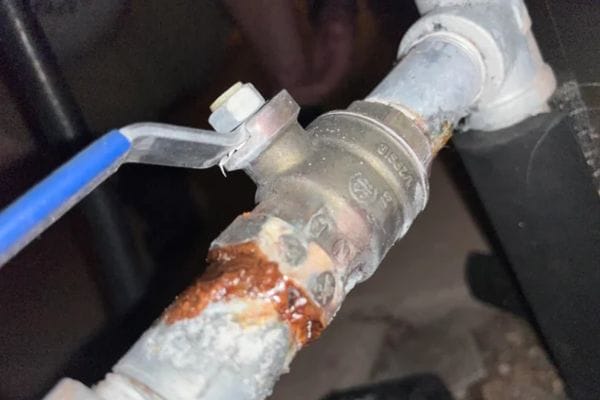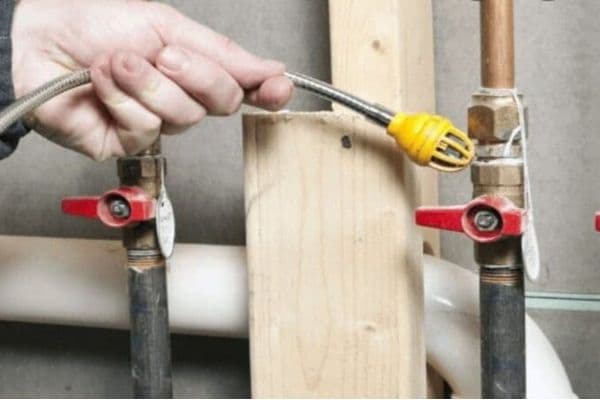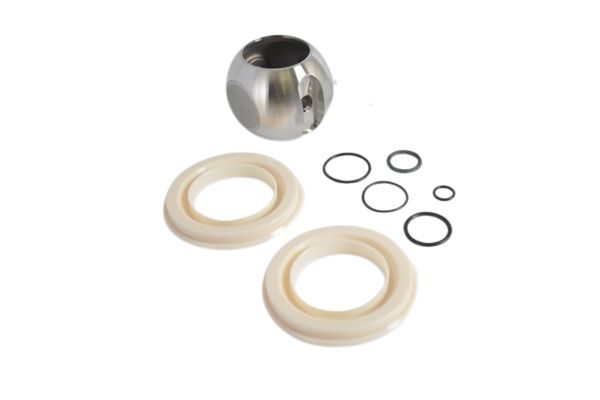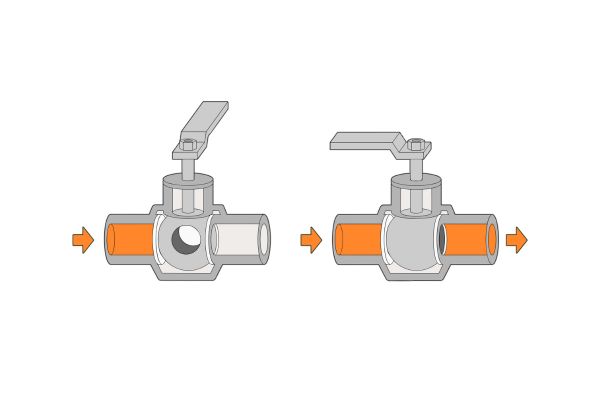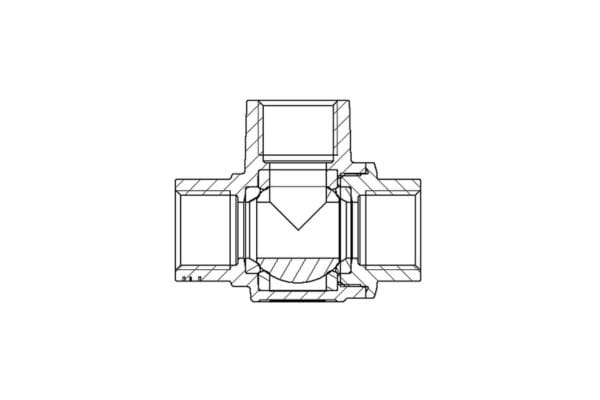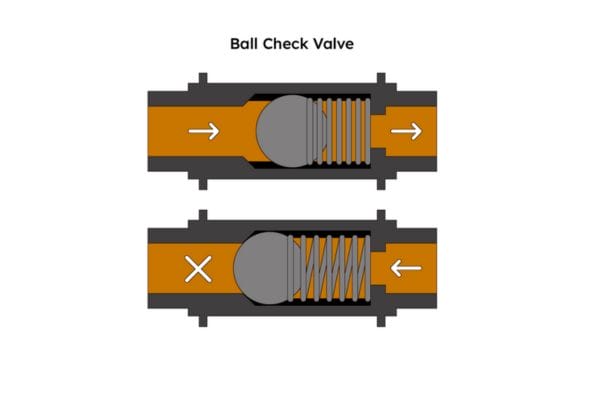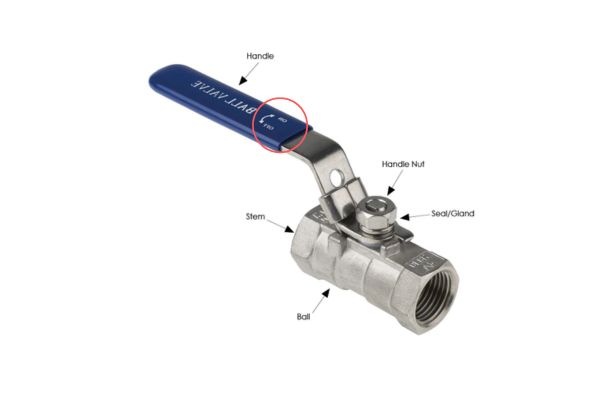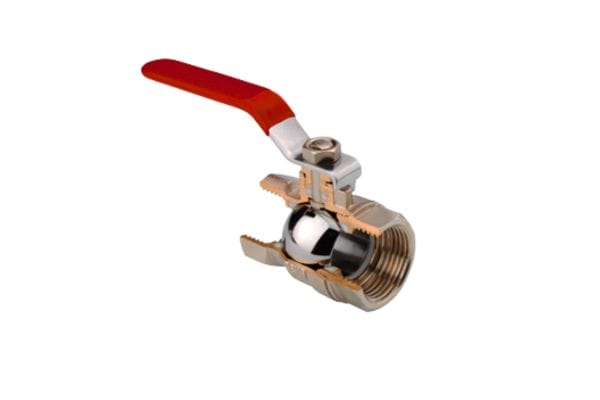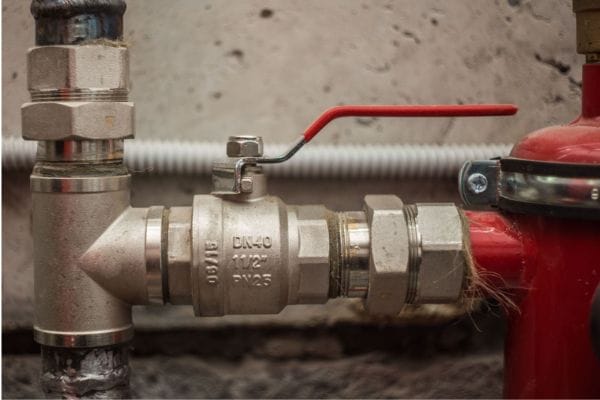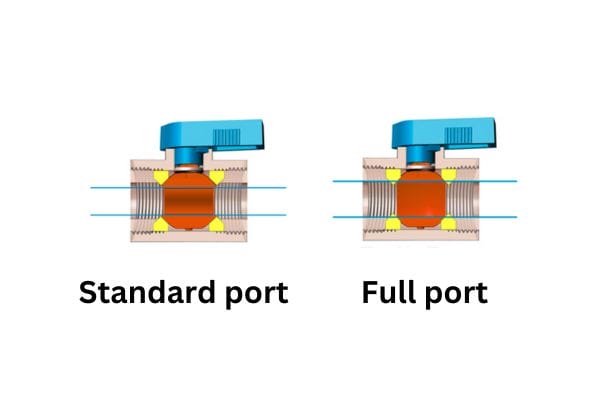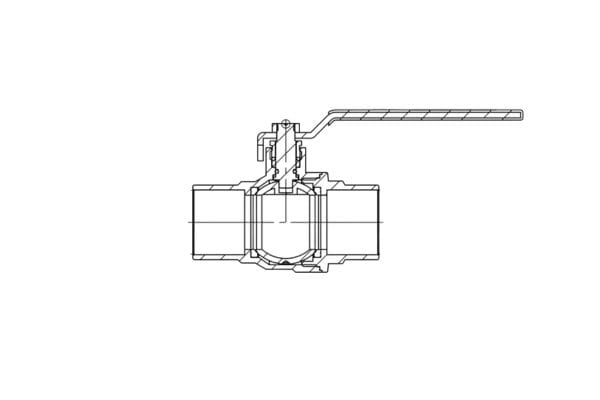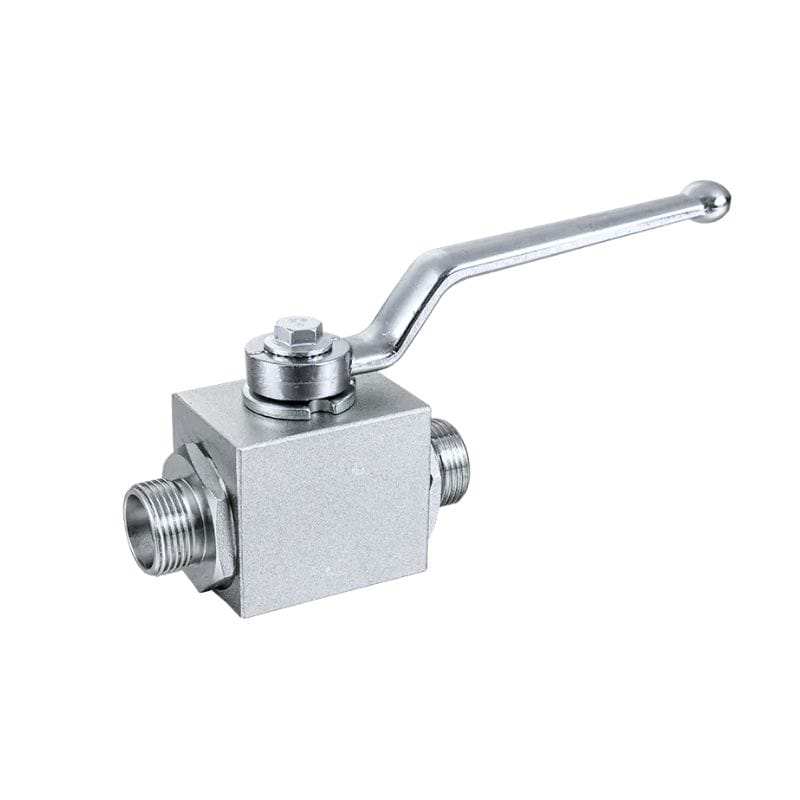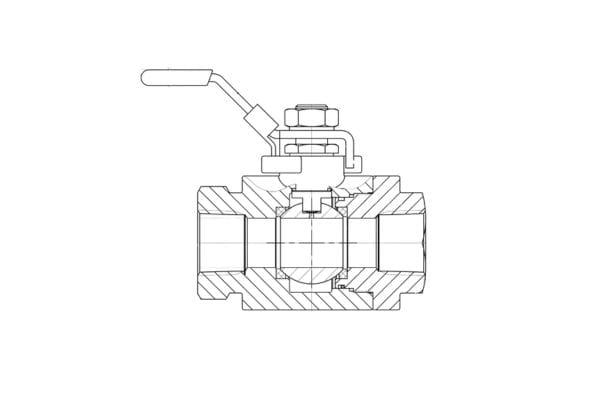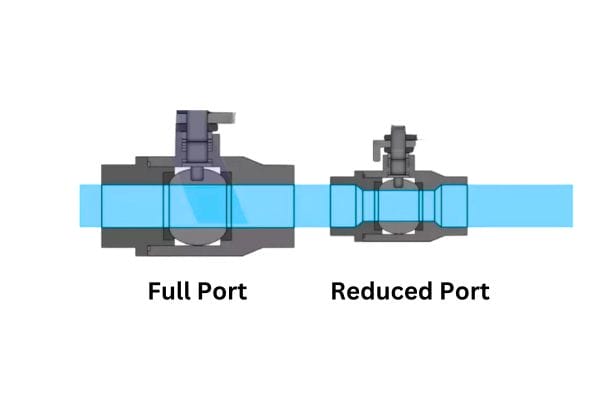A ball check valve is a type of one-way valve used to prevent the backflow of fluids in piping systems. It utilizes a ball, typically made from a durable material like stainless steel or rubber, which moves in response to fluid pressure. The ball seals off the flow path when backpressure is detected, ensuring that the fluid only flows in one direction.
Understanding Backflow: The Problem Ball Check Valves Solve
What is Backflow and Why is it a Concern?
Backflow is the undesirable and often dangerous reversal of fluid flow in a piping system. This typically occurs when there is a sudden change in pressure within the system, such as from a water hammer (a shockwave caused by a sudden stop or change in flow), or when there’s a pressure drop that causes fluid to flow in the wrong direction.
In many fluid systems, particularly those in drinking water supply or industrial processing, backflow is a significant concern for a few key reasons:
Contamination Risk: When water or other fluids flow backward through a system, they can carry contaminants from lower-quality or polluted areas into clean or safe sections. For example, in a potable water system, backflow could allow chemicals, bacteria, or debris to contaminate the clean water supply, posing serious health risks.
System Damage: In industrial settings, backflow can cause serious damage to equipment. If a pressurized system designed to move fluids in one direction experiences reverse flow, it can cause corrosion, wear, and even mechanical failure due to the improper direction of fluid flow.
Because backflow can cause contamination or damage, preventing it is a top priority in any fluid handling system. Ball check valves are a simple yet effective solution to this issue, helping to maintain safe, one-way fluid flow.
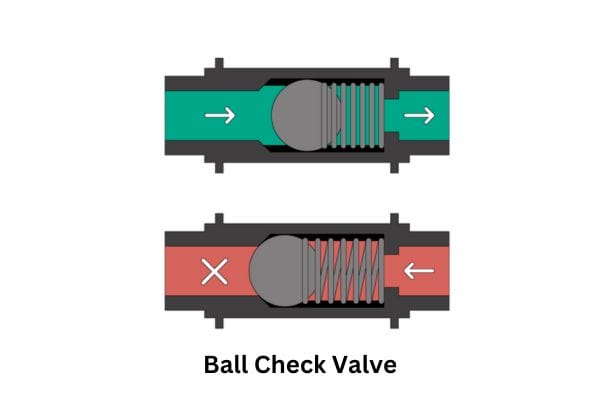
The Risks and Consequences of Reverse Flow in Systems
Contamination of Potable Water Systems One of the most serious concerns of backflow is the potential contamination of drinking water systems. Contaminants like chemicals, pesticides, and bacteria can be introduced into the water supply when the fluid reverses direction. This poses significant health risks, especially in areas where water quality is critical for public health.
Examples of Contamination:
Cross-Contamination: In plumbing systems, if a backflow occurs from a pool, sprinkler system, or industrial machinery, harmful substances like chlorine, fertilizers, or waste can enter the potable water lines.
Biological Contamination: In municipal water systems, if a backflow occurs from sewage or wastewater pipes, harmful pathogens or bacteria could contaminate the drinking water, leading to disease outbreaks.
Equipment Damage Backflow doesn’t just affect water quality; it can also cause significant damage to equipment in both residential and industrial systems. Equipment designed to handle fluid in one direction can be seriously compromised when subjected to reverse flow. This can cause:
Corrosion: Many materials used in equipment, such as metals, can begin to corrode when exposed to fluids moving in the opposite direction. For example, corrosive chemicals might travel through equipment pipes, damaging sensitive components and causing leaks.
Pressure Imbalances: When fluid reverses direction, it can create pressure imbalances in the system. This may lead to equipment failure, such as pump malfunction or pipeline rupture, because components aren’t built to withstand reverse pressure.
Increased Maintenance and Operational Costs Backflow leads to inefficiencies in system performance, which can result in higher operational and maintenance costs. When backflow occurs, the system may need more frequent inspections, repairs, and part replacements. For instance:
Cost of Repairs: If backflow damages machinery or piping, expensive repairs or replacements might be necessary to restore the system to its optimal state.
Increased Energy Usage: Reverse flow may cause the system to work harder to maintain proper flow or pressure, leading to increased energy consumption and operating costs.
System Downtime When reverse flow is detected, operators may need to shut down parts of the system to prevent further damage, leading to costly downtime. Whether in a municipal water supply, industrial operation, or commercial setting, system downtime can result in delays, lost productivity, and a direct financial impact.
How Does a Ball Check Valve Work?
Basic Principle Behind Ball Check Valves
A ball check valve is a simple but highly effective device used to prevent backflow in fluid systems. Its primary function is to allow fluid to flow freely in one direction while automatically blocking reverse flow.
Forward Flow: When fluid flows in the correct direction, the ball inside the valve is pushed away from the valve seat, allowing the fluid to pass through the valve unobstructed.
Backflow Prevention: If the flow reverses due to a drop in pressure or other changes in the system, the ball moves back into place, sealing the valve and preventing any backflow. This automatic sealing mechanism ensures that no fluid flows in the wrong direction, safeguarding the system and preventing contamination or damage.
Step-by-Step Breakdown of Ball Check Valve Operation
Fluid Enters the Valve in the Desired Direction When fluid enters the valve from the inlet side, it pushes against the ball. The fluid pressure causes the ball to lift away from the valve seat, allowing the fluid to flow freely through the valve.
Ball Remains in an Open Position, Allowing Free Flow As long as the fluid is flowing in the correct direction, the ball remains lifted, and the valve stays open. The ball doesn’t interfere with the flow, allowing the system to operate as intended without any hindrance.
When Flow Direction Reverses (Backflow), the Ball Seals the Valve If the flow direction changes, such as in the event of backpressure or a sudden drop in pressure downstream, the fluid pushes the ball back onto the valve seat. The ball automatically seals off the valve, stopping any fluid from flowing backward.
Sealing Action Prevents Fluid from Flowing Backward The ball’s ability to seal off the valve is crucial in preventing reverse flow. Once the ball is in position, the valve is completely closed to reverse flow, and no fluid can enter the system from the wrong direction.
How the Ball Inside the Valve Prevents Backflow
The ball is the key element that makes ball check valves so effective at preventing backflow. Here’s how it works in more detail:
Ball Movement in Response to Fluid Pressure: The ball is held in place by the pressure of the incoming fluid. When the flow direction is correct, the ball moves away from the valve seat, creating an open path for the fluid to pass.
Backflow Causes the Ball to Seal the Valve: When backflow occurs, the reverse pressure pushes the ball back onto the seat, closing the valve and preventing any reverse fluid from entering. The ball’s ability to seal effectively is a key feature that keeps systems safe and functioning properly.
Automatic Action: This process happens automatically without any external control, making ball check valves a reliable solution for systems that require one-way flow. The ball check valve’s design ensures that it operates under a wide range of pressures and is not prone to wear or failure due to moving parts like in other valve types.
The Valve Mechanism: What Makes the Ball Check Valve Unique?
Overview of Valve Mechanisms
Ball check valves are a specific type of check valve used to prevent backflow in fluid systems. They differ significantly in design and operation compared to other common types of check valves, such as swing check valves and lift check valves.
Swing Check Valves: Swing check valves operate using a hinged disc that swings open and closed based on the pressure differential between the inlet and outlet. While they are effective at preventing backflow, their design can lead to wear on the hinge and increased maintenance needs, especially in systems with fluctuating pressure or where backflow is frequent.
Lift Check Valves: Lift check valves use a piston or disc that lifts off the seat when flow is in the correct direction, and falls back to seal off the flow when the direction reverses. While they can effectively prevent backflow, lift check valves may require more force to open, which can lead to wear on the sealing surfaces over time, especially in high-pressure systems.
Ball Check Valves: Unlike swing or lift check valves, ball check valves use a simple ball mechanism to control the flow direction. The ball sits against a valve seat and moves in response to pressure changes. When fluid flows in the correct direction, the ball lifts off the seat, allowing the fluid to pass through. If the flow reverses, the ball moves back onto the seat, creating a tight seal and preventing backflow. The ball’s design and action offer a more reliable and effective seal, especially in fluctuating pressure environments, making ball check valves an excellent choice for backflow prevention.

The Role of the Ball in Sealing the Valve
The ball inside the valve plays a critical role in sealing the valve and preventing backflow. Its design allows for quick and effective sealing, ensuring the valve operates reliably even under varying fluid pressures. Here’s how:
Ball Shape and Seal Efficiency: The ball is typically made from durable materials like stainless steel, rubber, or plastic, depending on the application. Its round shape allows it to form a tight, effective seal against the valve seat when backflow is detected. Unlike other check valves that rely on flat discs or pistons, the ball’s smooth, curved surface ensures it seats more evenly, reducing the likelihood of leaks.
Immediate Reaction to Backflow: When the fluid starts flowing in the reverse direction, the ball is automatically forced back into the seat. This action happens swiftly and without the need for any manual intervention. The ball’s snug fit against the seat blocks the flow path completely, ensuring no backflow into the system.
Seal Integrity Across Various Pressure Conditions: The ball check valve is highly effective across a wide range of pressures because the ball’s seal remains intact even under fluctuating or high-pressure conditions. In contrast, other check valves, like swing or lift valves, may struggle to maintain a reliable seal when subjected to varying or excessive pressure.
How the Ball Reacts to Changes in Flow Direction
The movement of the ball inside the valve is driven by the direction and pressure of the fluid passing through. This is the core mechanism that allows the ball check valve to be so effective at preventing backflow:
Flow in the Correct Direction: When the fluid flows in the intended direction, the pressure pushes the ball away from the valve seat. The ball moves freely, and the fluid is allowed to pass through the valve without obstruction. The valve remains open as long as the fluid flow is in the correct direction.
Flow Reversal (Backflow): If the flow direction reverses due to a pressure drop or change in the system, the ball is pushed back into place by the back pressure. The ball moves quickly and effectively back onto the seat, creating a tight seal. This ensures that no fluid can flow backward into the system, preventing contamination, damage, and inefficiencies.
Self-Regulating Action: The beauty of the ball check valve mechanism is that it is self-regulating. The ball automatically adjusts to changes in pressure, whether the system is operating under normal flow conditions or experiencing back pressure. No external control is required to ensure the valve operates properly, making it a reliable and low-maintenance solution for backflow prevention.
Troubleshooting and Maintenance: Ensuring Long-Term Performance
Common Issues with Ball Check Valves
While ball check valves are durable and efficient, like any mechanical component, they can experience wear and tear over time. Common issues that may arise with ball check valves include:
Valve Wear: Over time, the internal components of the valve, especially the ball and valve seat, can experience wear due to continuous fluid flow and pressure changes. This wear can reduce the effectiveness of the seal, leading to leakage or failure to close properly.
Leaks: Leaks are one of the most common issues with ball check valves. These can occur at the valve seat, the ball, or the connection points. Leaks may be caused by worn seals, corroded components, or debris obstructing the ball’s movement, preventing it from fully sealing the valve.
Failure to Close Properly: The valve ball may not close tightly against the seat, especially when backpressure is present. This can lead to backflow, which may compromise the integrity of the system and introduce contaminants. Failure to close can occur due to debris, valve misalignment, or issues with the valve’s internal mechanism.
These problems can typically be resolved by inspecting the valve for debris, ensuring that all connections are properly tightened, or replacing worn components such as seals or the ball itself.
How to Spot Valve Wear and Tear
It’s crucial to regularly inspect your ball check valve to identify early signs of wear and prevent more serious issues. Here are the key indicators that the valve may be wearing out or not functioning properly:
Signs of Corrosion: Corrosion can occur when the valve is exposed to harsh chemicals, moisture, or high temperatures. Look for rust or pitting on the valve body, ball, or internal components. Corrosion weakens the valve and can lead to leaks or failure to properly seal.
Ball Misalignment: Over time, the ball inside the valve can become misaligned due to pressure fluctuations or mechanical failure. If the ball is misaligned, it may not seal properly against the valve seat, resulting in leaks or backflow. Listen for unusual sounds or feel for resistance when operating the valve, which could indicate misalignment.
Failure to Seal Properly: A ball check valve relies on the ball forming a tight seal against the valve seat to prevent backflow. If the valve doesn’t close completely, even when pressure is applied, it could indicate that the ball or seat is worn, damaged, or obstructed by debris. Backflow could occur if the seal is compromised, which may require valve replacement.
Unusual Valve Behavior: If the valve operates slowly, with a noticeable delay in closing or opening, or if you notice irregular movements, this could indicate internal damage or debris buildup. The valve ball may be sluggish or stuck, preventing it from sealing properly.
Routine Maintenance Practices for Optimal Performance
To ensure your ball check valve continues to function efficiently and lasts for many years, regular maintenance is essential. Here are the key steps you should take to maintain optimal performance:
Regular Cleaning and Inspection:
Clean the valve periodically to prevent debris, sediment, or build-up from obstructing the ball’s movement. Use a gentle cleaner compatible with the valve material to remove dirt or buildup.
Inspect the valve for corrosion, wear, or any signs of damage. Check the ball and valve seat for smooth operation and proper alignment.
Check for Leaks:
Regularly inspect the valve for leaks, especially around the ball and valve seat, as these are common problem areas. If any leaks are detected, tighten the connections or replace worn seals as necessary.
Replace Worn Components:
Over time, seals, gaskets, and the valve ball itself may wear out. If the ball check valve is leaking or not closing properly, check the seals and replace them if necessary. If the ball shows signs of wear or misalignment, it may need to be replaced to maintain proper sealing and backflow prevention.
Lubricate Moving Parts:
Lubricating the moving parts of the valve can help reduce friction and prevent wear. Use appropriate lubricants for the material of the valve and follow manufacturer recommendations for lubrication.
Test Valve Operation:
After cleaning and maintenance, test the valve to ensure it operates correctly. Open and close the valve a few times to verify smooth movement and proper sealing. Pay attention to any resistance or unusual behavior.
Monitor System Pressure:
Ensure that the pressure in your system is within the recommended range for the valve. Excessive pressure or pressure fluctuations can lead to premature wear on the valve, especially on the ball and valve seat.
Conclusion
Backflow prevention is critical for system safety and operational efficiency, whether in plumbing or industrial applications. By choosing the right ball check valve based on material compatibility, pressure rating, and size, you can ensure long-term protection and keep your fluid system running smoothly.
FAQ
What is a ball check valve?
A ball check valve is a one-way valve that prevents backflow by using a ball to seal the valve when the flow direction reverses.
How does a ball check valve work?
When fluid flows in the correct direction, the ball moves away from the valve seat, allowing flow. If backflow occurs, the ball moves back onto the seat, sealing the valve and preventing reverse flow.
Why is preventing backflow important?
Preventing backflow helps protect systems from contamination, reduces the risk of damage to equipment, and ensures the fluid flows in the intended direction.
Where are ball check valves commonly used?
Ball check valves are used in plumbing systems, industrial pipelines, wastewater management, and hydraulic systems to ensure one-way flow and prevent contamination or damage.
How do I know if my ball check valve is damaged?
Signs of damage include leaks, failure to seal properly, ball misalignment, or slow valve response. Regular inspection for wear or corrosion is essential.
Can ball check valves handle high-pressure systems?
Yes, ball check valves are designed to handle a wide range of pressures, making them suitable for both low and high-pressure applications. However, selecting the correct valve material and pressure rating is crucial for optimal performance.






